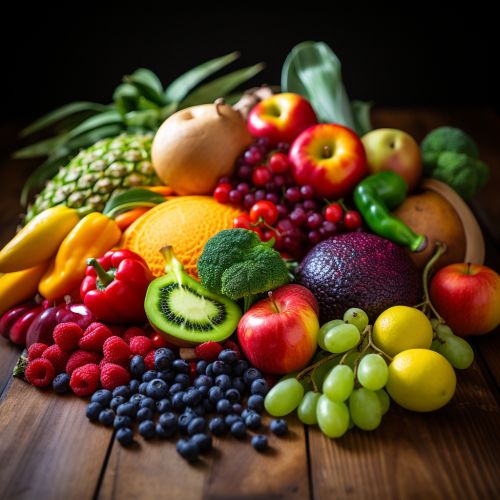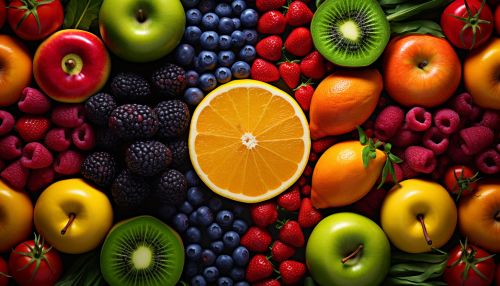Bioactive compounds
Introduction
Bioactive compounds are naturally occurring chemical compounds found in plants, animals, and microorganisms that have effects on biological systems. These compounds have been the focus of extensive research due to their potential benefits to human health, including their roles in disease prevention and treatment.


Classification of Bioactive Compounds
Bioactive compounds can be classified into several categories, including phenolic compounds, alkaloids, polyketides, and terpenoids, among others. Each of these categories encompasses a wide range of compounds with diverse structures and biological activities.
Phenolic Compounds
Phenolic compounds are a large group of bioactive compounds characterized by the presence of one or more hydroxyl groups attached to an aromatic ring. These compounds are widely distributed in the plant kingdom and have been associated with a variety of health benefits, including antioxidant, anti-inflammatory, and anticancer activities.
Alkaloids
Alkaloids are a diverse group of bioactive compounds that contain a basic nitrogen atom. These compounds are found in a variety of organisms, including plants, fungi, and bacteria, and have a wide range of biological activities, including analgesic, anti-inflammatory, and anticancer effects.
Polyketides
Polyketides are a large group of secondary metabolites produced by bacteria, fungi, and plants. These compounds have a wide range of biological activities, including antibiotic, antifungal, and anticancer effects.
Terpenoids
Terpenoids, also known as isoprenoids, are a large and diverse group of bioactive compounds found in a wide variety of organisms, including plants, fungi, and bacteria. These compounds have a wide range of biological activities, including anti-inflammatory, antioxidant, and anticancer effects.
Extraction and Isolation of Bioactive Compounds
The extraction and isolation of bioactive compounds from natural sources is a complex process that involves several steps, including sample preparation, extraction, purification, and identification. Various techniques, including liquid-liquid extraction, solid-phase extraction, and chromatography, are commonly used in the extraction and isolation of bioactive compounds.
Bioactivity and Mechanisms of Action
Bioactive compounds exert their effects on biological systems through various mechanisms of action. These mechanisms can include direct interactions with cellular targets, such as enzymes or receptors, or indirect effects, such as the modulation of gene expression or the alteration of cellular signaling pathways.
Applications of Bioactive Compounds
Bioactive compounds have a wide range of applications in various fields, including medicine, agriculture, and food industry. In medicine, these compounds are used in the development of new drugs and therapies. In agriculture, they are used as biopesticides and growth promoters. In the food industry, they are used as natural preservatives and flavor enhancers.
Future Perspectives
The study of bioactive compounds is a rapidly evolving field, with new compounds being discovered and their biological activities being elucidated. Advances in analytical techniques and the development of new extraction and purification methods are expected to facilitate the discovery and characterization of new bioactive compounds. Furthermore, the integration of bioinformatics and computational biology approaches is expected to accelerate the identification of potential targets for bioactive compounds and the prediction of their biological activities.
